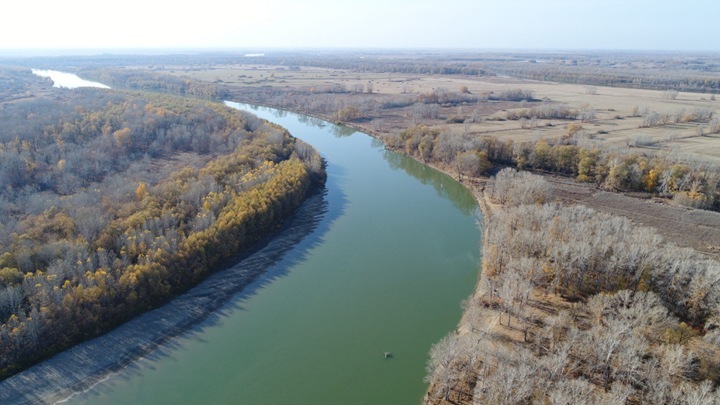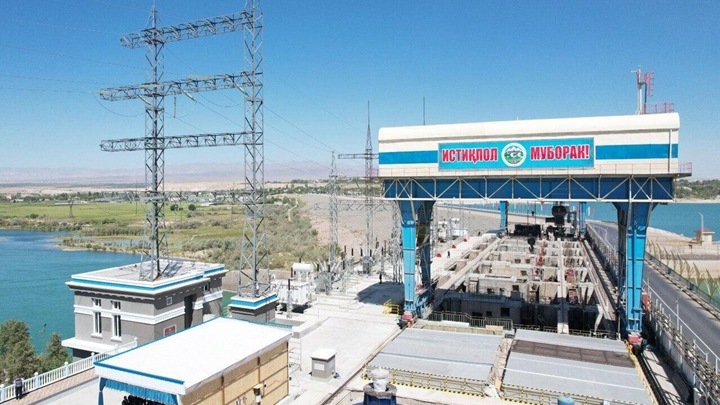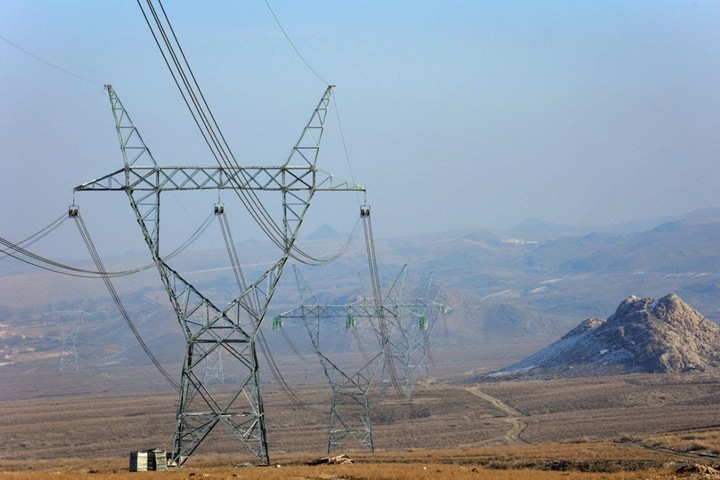Irtysh under the gun: reversal of Siberian rivers or new channels in Kazakhstan
The Irtysh is in the spotlight again – this time because of the agreement between Kazakhstan and Russia. The authorities of the Abai and Omsk regions signed a protocol on cooperation: until 2028 they will work together on ecology, industry, education and even digitalization. The main focus is the Irtysh River, a vital water resource for millions of people.

An artery for the whole of Kazakhstan
The transboundary Irtysh River supplies water to five regions of the republic – East Kazakhstan, Abai, Pavlodar, Akmola and Karaganda regions. The latter receives water through the Kanysh Satpayev canal.
Of course, the largest amount of water goes to the industry of the east – the enterprises of the region use over 2.2 billion cubic meters per year. Agriculture uses a little more than 1 billion cubic meters, and the needs of the population account for about 137 million. Statistical data were shared with us at the Ministry of Water Resources of Kazakhstan. They also assured that there is enough water for everyone in the Irtysh: there is no shortage today.
“The permitted volumes of water in the basin fully meet the needs of industrial enterprises. To date, there is no shortage of water resources in the river basin,” the response says.
The industrial giants of Pavlodar and Ust-Kamenogorsk are directly dependent on the river. It provides them with technological needs, participates in the water treatment system, supplies water to homes and to production. Energy, metallurgy, chemical and food industries – all this works thanks to the Irtysh.
Accident on the “Kurchatov”
However, not everything is so simple here either. In 2024, sewage got into the river in the Abai region due to an accident at the Kurchatov water utility. No one reported in time – and this, by the way, is a violation of the law.
Ecologists of the region and sanvrachi Pavlodar region took samples after an emergency discharge. The fact of contamination of the Irtysh was officially confirmed. Kurchatov Vodokanal has previously been fined for insufficient biological water purification – since the beginning of 2024‑ the organization has received fines in excess of 10 million tenge ($ 18,353).
Kazakhstan and Russia
So far, the parties are talking about the importance of environmental control, but there are no clear steps. Meanwhile, almost 180 enterprises with Russian participation are already operating in the Abai region, in less than six months the trade turnover between the regions amounted to $129 million.
Anatoly Ryabtsev, ex–chairman of the Committee on Water Resources of the Ministry of Agriculture of Kazakhstan and Director of the international research center Water Hub KazNAIU, shared his thoughts on how economic cooperation will affect the river.
Unlike the official department, which believes that there is enough water, the expert is less optimistic: the volume of water is decreasing, and this is already affecting the regions. And if in Russia a dam was built for Omsk, a city that drinks water from the Irtysh, in order to keep the river level at critical moments. For Kazakhstan, the Irtysh is not only a source of drinking water, but also a potential transport artery. Lowering the level jeopardizes this channel as well.
According to the Ministry of Water, the flow from Kazakhstan to Russia is regulated by the rules for the use of water resources of the Upper Irtysh cascade of reservoirs. Its volume is recorded annually at the Priirtyshskoye hydropost. In 2024, the volume of flow amounted to 33.74 km3, significantly exceeding the figures of previous years.
“We have a stable situation with the Russian Federation – there is an interstate commission, and cooperation is at the level of basin inspections. Today, Kazakhstan no longer has the volumes of irrigated land that it had in Soviet times, and water intake for the agricultural sector has decreased. But there is another important function of the Irtysh – transport. Timber is imported from Russia along the river. And Russia itself uses the Irtysh primarily to provide drinking water to Omsk,” Ryabtsev added.
Confirmation of the development of cooperation between the countries was the meeting on July 2 of the akim of the Abai region Berik Uali with a delegation from the Omsk region. The delegation included representatives of education, science, industry and trade. It was headed by the deputy chairman of the Government of the Omsk region and the official representative of the region to the Government of the Russian Federation Andrey Shpilenko. The parties discussed specific areas of cooperation, including joint projects, water issues and strengthening interregional ties.
He also invited Berik Uali to the international cross–border forum “Irtysh – River of Friendship and Development”, which will be held in Omsk in the fourth quarter of 2025.
Joint projects
In 2023, in the village of Novopokrovka in the Borodulikhinsky district of the East Kazakhstan region, for the first time, they began to deepen and clean the Zhura riverbed (a river in the Krasnoyarsk Territory of Russia, the left tributary of the Chulym (Ob basin). In 2024, the work was continued, more than 1.5 million tenge ($2.7 thousand) was allocated from the district budget. Riverbed cleaning measures are planned to be carried out this year too, the governor’s office of the Abai region reported.
“In addition, design and estimate documentation is currently being developed for the reconstruction of sewage treatment plants located in the village of Mukur, Zhanasemeysky district. The planned project implementation period is 2025-2027,” the ministry added.
Water limit
By the way, Kazakhstan cannot just take as much water as it wants from the Irtysh. And how much is possible – determine the limits of water use. They are approved by the state to be enough for everyone: people, industry, and agriculture.
Now there are new limits for the period 2027-2036, they were approved by the Ministry of Water Resources and Irrigation of Kazakhstan in June 2025. Before that, the country lived under different limits, calculated for 2016-2025.
China — Kazakhstan — Russia
According to the ministry, from the Chinese side, the flow of water is controlled at the Boran hydropost. The volume of transboundary runoff has varied significantly in recent years: from 5.69 km3 in 2022 to 11.9 km3 in 2024. At the same time, no firm interstate agreements on the distribution of this resource have yet been signed.
“Previously, the volume of water coming from China was about 12 cubic kilometers per year. Now the Chinese side takes almost 4 cubic kilometers for itself – about 8 remain. But this figure is not stable either. In dry, low–water years, the volume decreases and can range from 6 to 8 cubic kilometers,” Ryabtsev said.
The flow of water from Kazakhstan to Russia is regulated by the rules for the use of water resources of the Upper Irtysh cascade of reservoirs. Its volume is recorded annually at the Priirtyshskoye hydropost. In 2024, the volume of flow amounted to 33.74 km3, significantly exceeding the figures of previous years.
Is the Irtysh navigable?
The Irtysh is still a navigable river, but only up to a certain area.
“It is quite possible to move along the river to Ust-Kamenogorsk – both passenger ships and small barges ply here. The main traffic goes to Semey, ships get there without problems due to the water level and the presence of a channel in the Shulba reservoir, through which they enter and go upstream,” he said.
But there is almost no shipping above Ust-Kamenogorsk. There is too little water there, there is not enough depth, and the river becomes unsuitable for ship traffic. Sometimes barges still reach Ust-Kamenogorsk, but this is the exception rather than the rule.
Can Russian rivers feed Kazakhstan
The expert suggests returning to the idea of transferring part of the outflow of Siberian rivers, such as the Ob, Lena and Yenisei, to Central Asia.
“I raised this issue at a big conference in Uzbekistan. That is, it was an international conference where the water issues of the region, including the problem of the Aral Sea and the Amu Darya, were discussed,” he stressed.
Theoretically, such projects were carried out in Soviet times. Then their cost was estimated at $ 500 billion. Today, even with the consent of all parties, implementation may take 15-20 years. But if you don’t start moving now, the expert is sure that tomorrow it may be too late.
“Today, fresh water accounts for only about 2% of the total volume of water on the planet. And the rivers in Siberia simply carry billions of cubic meters of fresh water into the salty ocean. The issue needs to be resolved now – at the level of heads of state, otherwise the consequences will be not only environmental, but also economic,” said KazNAIU, Director of Water Hub.
The situation in the south, according to the expert, is also alarming. After the loss of the Aral Sea, Syr Darya and Amu Darya are on the verge of survival. A new canal has been built in Uzbekistan, which, according to forecasts, will take up to 10 km3 of water from the Amu Darya. This will hit the inflow to the Syrdarya, on which the water supply of southern Kazakhstan depends. And Uzbekistan, where irrigated agriculture is developed, is likely to use more water to the detriment of its neighbors.
Anti-river
According to Ryabtsev, depending on the water content of the year, the figures fluctuate greatly. For example, last year was favorable, and more than 25 km3 of water went to Russia.
“About 26 cubic kilometers of water are formed on the territory of Kazakhstan in the Irtysh. Of this volume, more than 20 goes to Russia. If the issue of water intake from the Russian territory is not resolved, Kazakhstan may implement an alternative project – the transfer of part of the Irtysh runoff inside the country. This is the most realistic option, since it does not depend on other countries, and at the same time only our own water is used,” the speaker said.
Part of the unused runoff can be used to solve the water problems of the capital – both for drinking needs and for recreational purposes.
“It is also possible to transfer water to the central regions of Kazakhstan, up to the Aral basin. These two versions of the projects have not yet received due attention and require a political decision at the state level,” the expert explained.
One of the local solutions is the construction of a canal from the Irtysh to Astana. It will be a giant hydraulic system, the first stage of supply is about 2 cubic kilometers of water.
“At the first stage, it is planned to send about 2 cubic kilometers of water. This is about the same amount as is supplied today via the Irtysh–Karaganda channel, which is already in operation. The water is supplied by 22 pumping stations, rises to a height of almost 500 meters. Pretty high marks. It’s kind of an anti-river. Previously, the river flowed in this direction, but now its channel is used in the opposite direction, pumping water from the Irtysh to Karaganda,” the ex–chairman of the Committee on Water Resources emphasized.
It is planned to build 42 reservoirs in Kazakhstan in the next four years.
Bakhytgul Zhilkibayeva (Sputnik Kazakhstan)
Original (in Russian): Иртыш под прицелом: разворот сибирских рек или новые каналы в Казахстане


